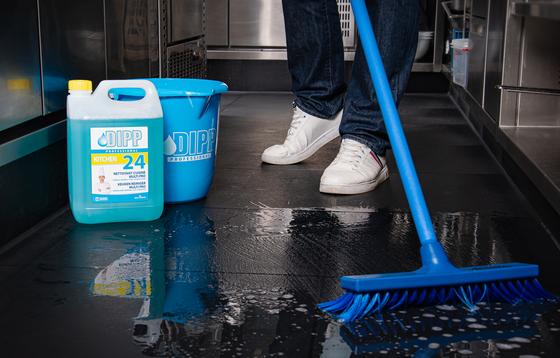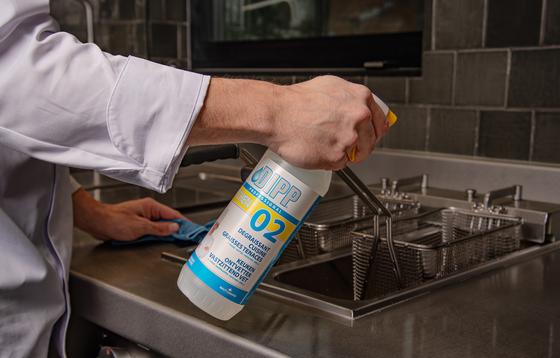
Clean and Safe: Cleaning According to HACCP in the Professional Kitchen
Clean and Safe: Cleaning According to HACCP in the Professional Kitchen
Hygiene is the foundation of every professional kitchen. Whether you run a restaurant, school kitchen, snack bar, or sports canteen – food safety is the top priority. The HACCP system (Hazard Analysis and Critical Control Points) helps control risks and ensures a safe working environment.
In this blog, you’ll learn how to clean according to HACCP, with a focus on three essential steps: degreasing, cleaning, and disinfecting.
What is HACCP and why is it important?
HACCP is a preventive system that identifies food safety risks and sets up control points. Cleaning plays a central role. Poor hygiene increases the risk of cross‑contamination, bacterial growth, and allergens – potentially leading to fines or even closure.
That’s why a clear and consistent cleaning process is essential in every kitchen.
The three pillars: Degreasing, Cleaning, and Disinfecting
A common misconception is that cleaning and disinfecting are the same. In reality, proper cleaning involves several sequential steps:
1. Degreasing
Removes grease, oil, and protein residues. Grease fuels bacterial growth and reduces cleaning agents’ effectiveness. Without good degreasing, further cleaning is less effective.
2. Cleaning
Removes visible and invisible dirt – including food residues, sugars, and microbes. Proper cleaning can eliminate up to 90% of bacteria. It’s a prerequisite for disinfection.
3. Disinfecting
Destroys remaining microorganisms. It must be applied on a clean surface. Proper contact time, concentration, and method are essential for effectiveness.
❗ Extra step (when needed): Descaling – especially in hard-water areas or when using steam equipment.
❗ Don't forget to rinse with clean water after each step.
Cleaning in practice: the step-by-step plan
An effective HACCP cleaning policy starts with a clear plan that includes at minimum:
- What is cleaned? Worktops, appliances, cold storage, floors
- How is it cleaned? Products, methods, contact times
- Who does it? Assigned person for each task
- When? Daily, weekly, or after each use
- Inspection? Who checks and records?
Such a plan ensures structure and is a strong tool during inspections.
Practical tips for a HACCP‑compliant cleaning policy
- Use color‑coded cleaning tools to avoid cross‑contamination.
- Choose suitable cleaning agents for the type of soil (grease, lime scale, proteins).
- Work from top to bottom – finish with the floor.
- Clean immediately after using surfaces and equipment.
- Maintain appliances like dishwashers and dispensers regularly.
- Train your team: everyone must know the proper procedures.
- Document all cleaning actions – these records are your proof during audits.
Conclusion
Cleaning according to HACCP is more than just an obligation: it’s the foundation of safe, professional, and responsible work. By focusing on the correct sequence – Degrease‑Clean‑Disinfect – and integrating it into a clear plan, you protect your customers, your team, and your reputation.
Looking for a complete, ready‑to‑use solution for hygienic HACCP compliance?
Discover our CleanPlanBox & Best Deal Pack: a comprehensive kit with clear instructions, color‑coding, and top‑quality products tailored to every professional kitchen.
With every Best Deal Pack purchase, you’ll receive a CleanPlanBox for free.


